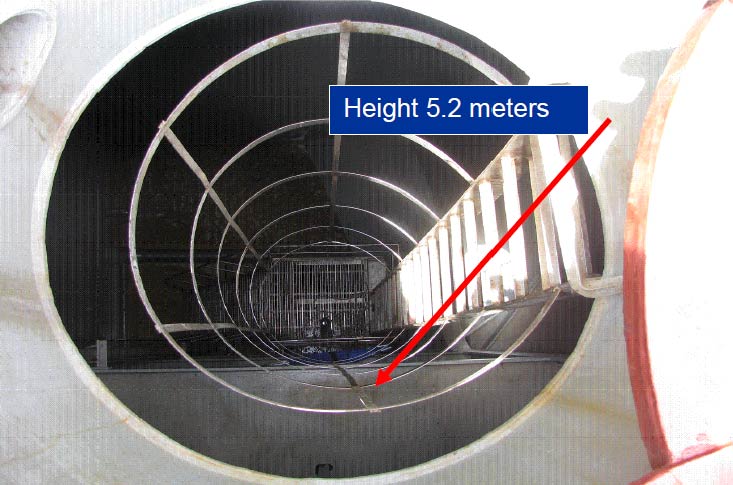Confined space – multiple fatalities
An incident has been drawn to IMCA’s attention in which one man died and two men had to be hospitalised following entry
into a confined space. The incident occurred when the chief officer had decided to control the valves of the slop tanks on the following day, and required the bosun to open the access hatches in order to start ventilation of the slop tanks to prepare for ‘gas free’. Shortly afterwards, personnel heard a noise as if an object had fallen into the tank. The chief officer came to the starboard slop tank and saw the bosun lying unconscious on the middle platform, 5.2 meters below the main deck. The chief officer immediately entered the tank with the intention of helping him. Further crew members arrived at the slop tank and saw the chief officer trying to wake the bosun up. Assistance and a stretcher was called for, and one crewman remained and then entered into the tank in order to help the chief officer.
All three persons became unconscious in the tank. Shortly thereafter the second officer started preparations for entering safely into the starboard slop tank. A portable fan was fitted to the slop tank in order to accelerate the ventilation. In the meantime the atmosphere inside the tank was measured by a portable gas analyser. The device went off to indicate the existence of the H2S in the tank. The read values were O2: 20, CO: 0, H2S: 60 and LEL: 0. Then the second officer put on a BA set and entered the slop tank. Afterwards the crewman, the chief officer and the bosun were all lifted out of the tank. The crewman and the chief officer were hospitalised and made a full recovery. Unfortunately the bosun could not be resuscitated and died.

Following investigation, the following points were noted:
- The bosun had fallen into the slop tank for unknown reasons;
- The chief officer entered into the tank impulsively ignoring the safety rules completely and acting emotionally to help his colleague;
- The crewman also reacted emotionally rather than logically and entered the tank to assist the chief officer to rescue the bosun;
- The recovery operation, including identified the danger caused by the accumulated gas in the tank, the rescue of the victims from the tank, the application of the first aid treatment and the helicopter medevac was carried out successfully and professionally in accordance with company procedures;
- There was inadequate understanding of how this lethal concentration of H₂S had been produced in the slop tanks.
Safety Event
Published: 4 July 2011
Download: IMCA SF 06/11
IMCA Safety Flashes
Submit a Report
IMCA Safety Flashes summarise key safety matters and incidents, allowing lessons to be more easily learnt for the benefit of all. The effectiveness of the IMCA Safety Flash system depends on Members sharing information and so avoiding repeat incidents. Please consider adding safetyreports@imca-int.com to your internal distribution list for safety alerts or manually submitting information on incidents you consider may be relevant. All information is anonymised or sanitised, as appropriate.
IMCA’s store terms and conditions (https://www.imca-int.com/legal-notices/terms/) apply to all downloads from IMCA’s website, including this document.
IMCA makes every effort to ensure the accuracy and reliability of the data contained in the documents it publishes, but IMCA shall not be liable for any guidance and/or recommendation and/or statement herein contained. The information contained in this document does not fulfil or replace any individual’s or Member's legal, regulatory or other duties or obligations in respect of their operations. Individuals and Members remain solely responsible for the safe, lawful and proper conduct of their operations.
